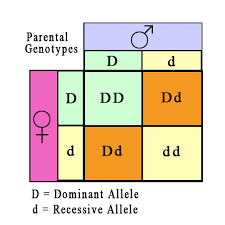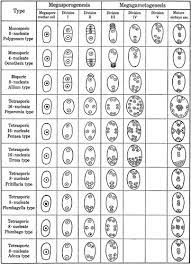Crossing over - Definition, Types, Significance, Mechanism, Factors Affecting Crossing Over
Crossing Over
Definition:
Crossing over is the interchange of chromosomal parts be
tween non-sister chromatids of a homologous pair of chromosomes resulting in
recombination of genes. Crossing over was discovered by Morgan. Crossing over
is the interchange of chromosomal segments between the homologous chromosomes. It
occurs during meiosis or gametogenesis. The crossing over occurs only between
non-sister chromatids of the homologous chromosomes. The number of crossing
over depends upon the length of the chromosome. The longer the length, the
higher the percentage of crossing over. When the genes are located distantly,
the chance for crossing over is higher. When the genes are closely located the
chance for crossing over is lesser.
Percentage of crossing over:
The number of crossing over between two genes is represented
by percentage of crossing over. The percentage of crossing over is directly
proportional to the distance between two genes. The percentage of crossing over
is the expression of the number of recombination’s in percentage to the total
number of offspring.
Formula:
Crossing over = Percentage
of total number of offspring in F₂ / Total number of recombination’s X 100
The percentage of crossing over is also called frequency of
crossing over. Thus percentage of crossing over= Frequency of crossing over =
Percentage of recombination.
Generally crossing over is less frequent near the centromere
and the tip of the chromosome. Crossing over at one point prevents another
crossing over nearby.
Types of crossing over:
Single crossing over:
When there is a single crossing over in a homologous chromo
some, it is called single crossing over.
Double crossing over:
When there are two cross overs in a homologous chromosome,
it is called double crossing over.
Multiple crossing over:
When there are many cross overs in a homologous chromosome, it is called multiple crossing over.
The crossing over may
be formed between two strands or 3 strands or 4 strands. It is always formed
between non-sister chromatids.
1. Linear arrangement of genes:
Crossing over clearly illustrates
the linear arrangement of genes in the chromosomes.
2. Chromosome Maps:
The frequency of crossing over is very
useful to construct the chromosome maps.
3. Recombination:
Crossing over produces new combination of
genes.
4. Variations:
Crossing over leads to genetic variation
which is the raw material for evolution.
Mechanism of Crossing Over:
- Crossing over is the interchange of chromosomal segments between non-sister chromatids.
- Crossing over occurs during meiosis of gametogenesis. The homologous chromosomes move towards each other and come to lie side by side. This phenomenon of pairing of homologous chromosomes is called synapsis. The paired homologous chromosomes are called bivalents.
- The homologous chromosomes split longitudinally. Each chromosome splits into two chromatids. Hence four chromatids are produced from two homologous chromosomes. This stage is called tetrad stage. The two chromatids of a chromosome are attached by a single centromere. These are called sister chromatids.
- The non-sister chromatids of homologous chromosomes twist over each other. At certain points, the non-sister chromatids are connected with each other. The points of contact between non-sister chromatids are called chiasmata (chiasma-singular). Chiasma means a cross.
- At the chiasma the chromatids break. This is brought about an enzyme called endonuclease. The broken segment of one chromatid is fused with the other chromatid and vice versa. This fusion brought about by another enzyme called ligase. The process of fusion is called ligation. The exchange of chromosomal segments tween non-sister chromatids is called crossing over.
- After crossing over, the non-sister chromatids repel each other They separate from each other from twisting. The separation starts from the centromere towards the ends like a zip. This separation called terminalization. This leads to the separation of homologous chromosomes.
2. X-ray increases the frequency of crossing over.
3. The frequency of crossing over decreases with increasing
age in female Drosophila.
4. Some genic mutation decreases the frequency of crossing
over.
5. Crossing over is less frequent near centromeres and the
tips of the chromosomes.
6. Inversion of chromosome segments suppress the crossing
over.
7. Chiasma formation at one point prevents the chiasma formation in the vicinity. This phenomenon is known as interference.




Comments